VJ Day: The moment World War Two ended
WATCH: Emma-Louise explains the story behind VJ Day and the final chapter of World War Two
- Published
The world had been at war for six long years.
But on the 15 August 1945, Victory over Japan Day - or VJ Day - the guns finally fell silent.
The fighting stopped and people across the world breathed a sigh of relief.
World War II was over.
80th anniversary of VE Day: What is VE Day?
- Published30 April
Hiroshima: A Newsround Special. Video, 00:15:35
- Published5 August 2015
What happened at Hiroshima and Nagasaki?
- Published9 August 2020
What does VJ Day stand for?
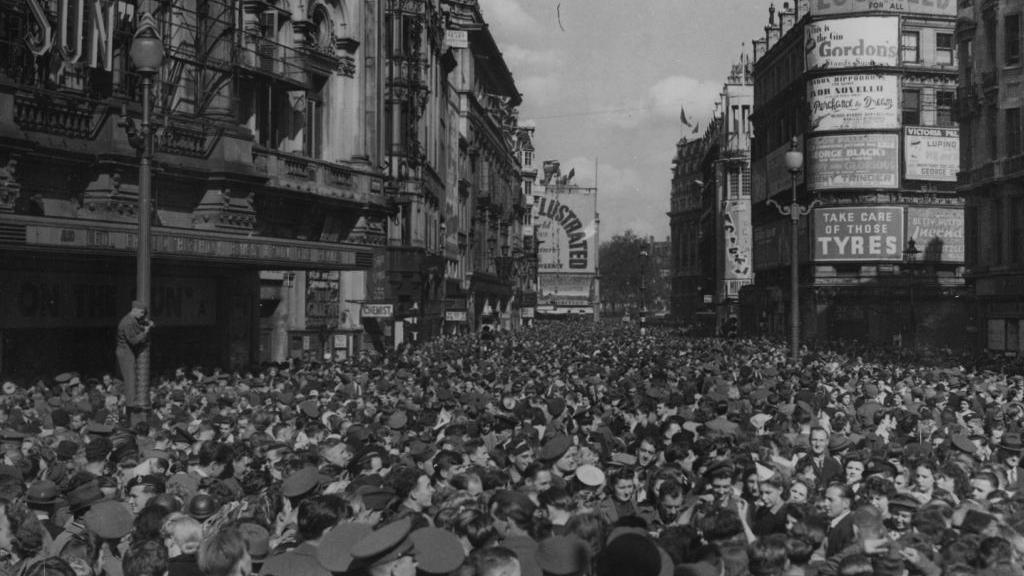
A huge crowd gathers in Piccadilly Circus in London to celebrate the news of Japan's surrender on 15 August 1945
VJ Day stands for Victory over Japan Day.
It's the name given to the day in August 1945 when Japan surrendered, bringing the Second World War to a complete end.
Earlier that year, on 8 May, Germany had surrendered - this was VE Day (Victory in Europe Day).
But while the war was over in Europe, it had still been raging in Asia and the Pacific.
Many soldiers, sailors and airmen from the Allies - which included the UK, USA and USSR - were still fighting against Japan.
VJ Day came three months later, ending the war everywhere.
An estimated 71,000 soldiers from Britain and Commonwealth countries died fighting Japan, including more than 12,000 prisoners of war who died in Japanese captivity.
Why was World War II still going on?
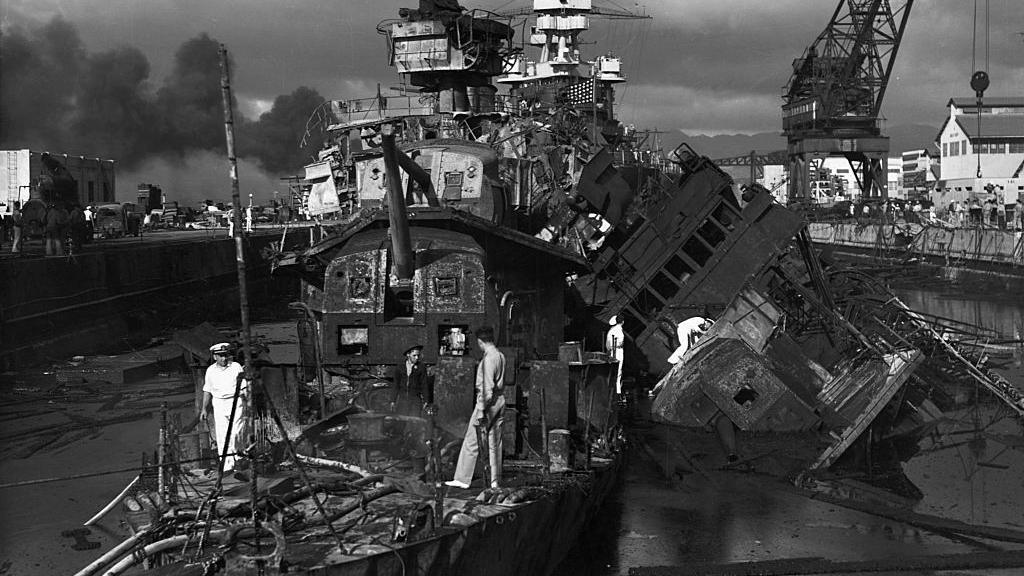
Badly damaged US warships after the Japanese attack on Pearl Harbor in 1941
In the 1930s, Japan had been expanding its empire, invading China and other parts of Asia.
By 1940 it had become allies with Nazi Germany and Italy, together known as the Axis Powers.
Then, in December 1941, Japan attacked a US Navy base at Pearl Harbour, in Hawaii, bringing the United States into the war.
VJ Day 2025: 'My great grandfather won the Victoria Cross'
Around the same time, Japan attacked parts of the British Empire - including Hong Kong, Malaya, Singapore, and Burma.
Suddenly, Britain and its Empire were fighting not just in Europe against Nazi Germany - but in Asia too.
Troops from Australia, India, Canada and African colonies joined the fight in jungles, on islands, and across vast mountains.
Millions of troops from across the British Empire
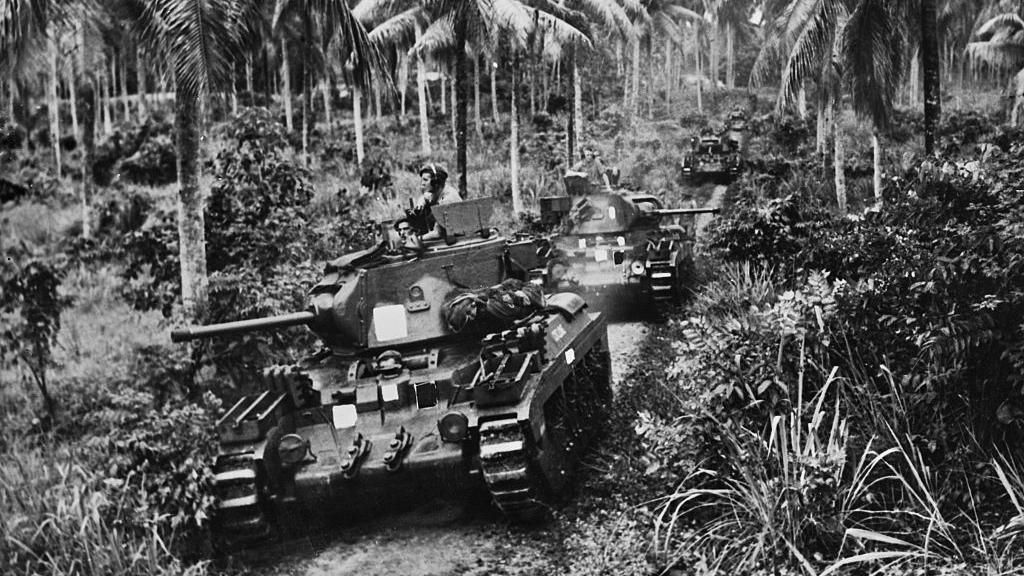
An Australian armoured brigade carrying out training manoeuvres in the jungles of Papua New Guinea.
The war in the East was brutal.
Soldiers faced extreme heat, tropical diseases, and dangerous terrain.
Many were captured and became prisoners of war (POWs).
Life in prison camps was often terrible: prisoners were given little food, made to work in harsh conditions, and suffered illness and injury.
Some never made it home.
Why did Japan surrender in WWII?
WATCH: Bun was 14-years-old when Hiroshima was bombed (2015)
Even after Germany's defeat in May 1945, Japan kept fighting.
The Allies prepared for a possible invasion of Japan itself - but this could have cost many lives.
Then, in August 1945, the United States decided to use the most powerful weapon the world had ever seen: Atomic bombs.
The first bomb was dropped on the Japanese city of Hiroshima, followed three days later by a second, on the city of Nagasaki.
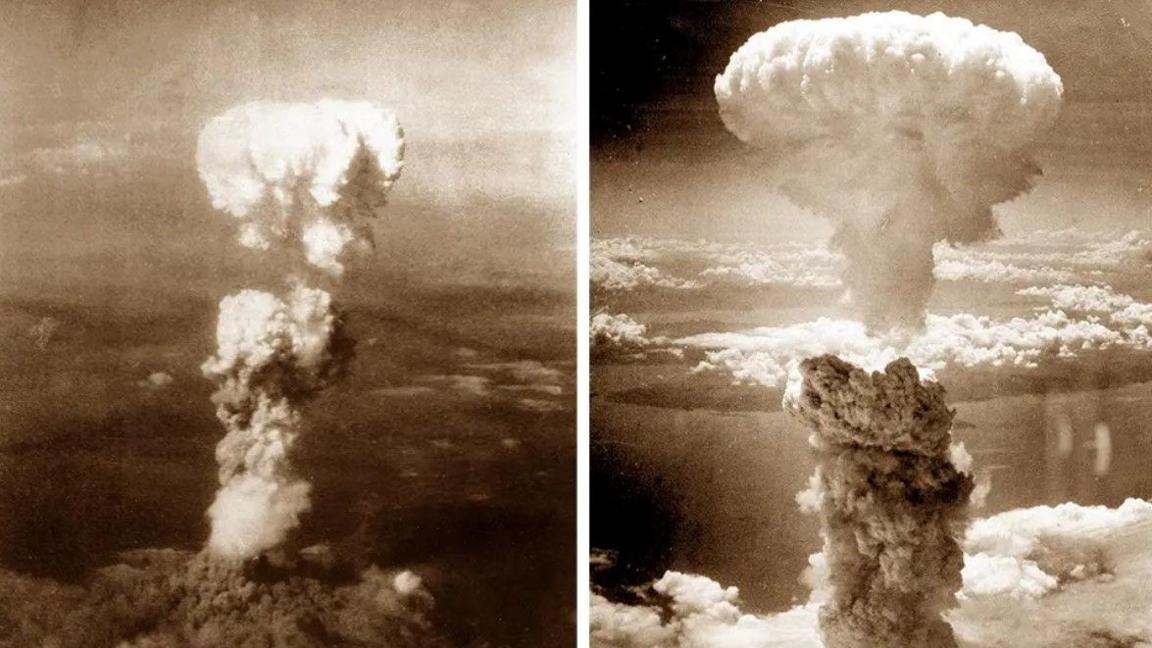
The atomic bomb blasts over Hiroshima (left) and Nagasaki (right)
The devastation was instant and enormous.
Six days after the bomb on Nagasaki, Japan surrendered.
These are still the only atomic weapons ever used in war, and their devastating power has meant countries have avoided using them again.
Who announced VJ Day?
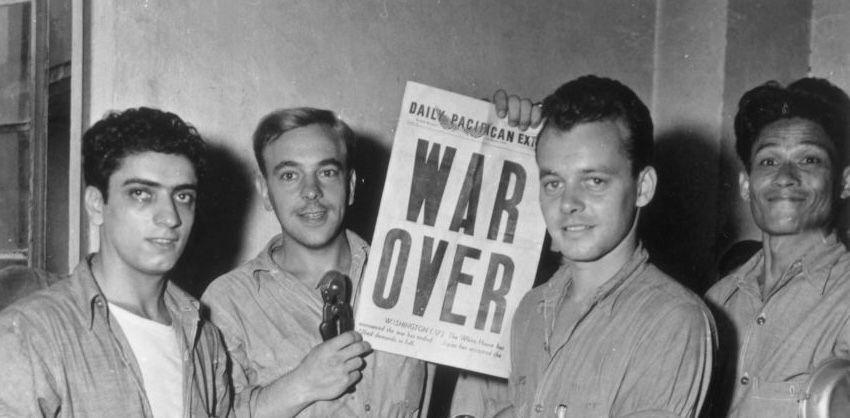
Men at a naval base in the Philippines celebrate the end of World War II
US President Harry S Truman broke the news of Japan's surrender at a press conference at the White House at 7pm on 14 August.
Later at midnight the UK's recently elected Prime Minister Clement Attlee spoke to the British public in a radio broadcast.
"Japan has today surrendered," he said.
"The last of our enemy is laid low. Peace has once again come to the world."
The following day, 15 August 1945, Japan's Emperor Hirohito was heard on the radio for the first time ever when he announced the surrender.
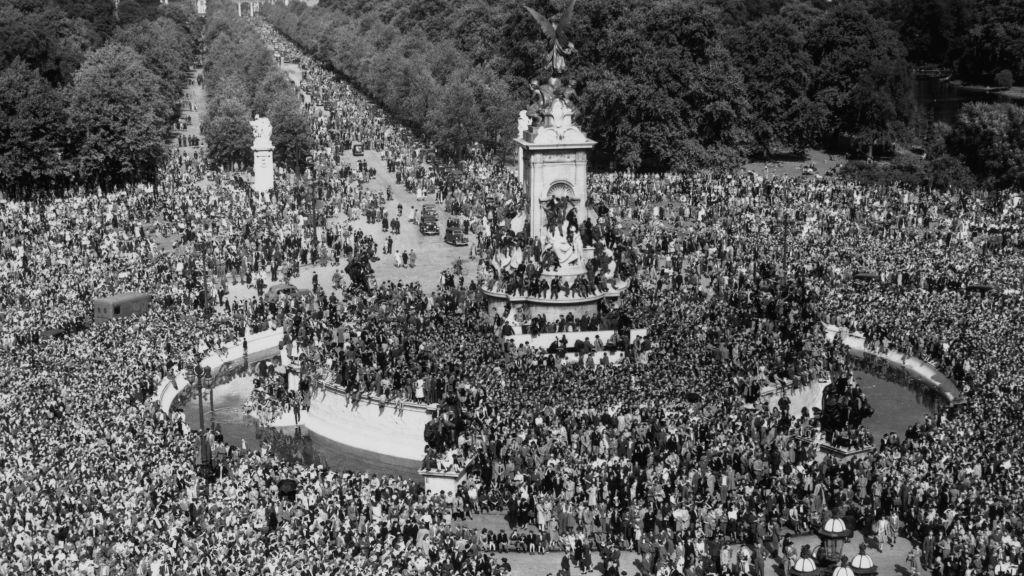
Following Japan's surrender, crowds of people gathered outside Buckingham Palace in London, with some climbing on the Victoria Memorial
Following the news, people poured into the streets to celebrate.
In London, crowds filled Piccadilly Circus and gathered outside Buckingham Palace.
Millions of people from the allied countries took part in parades and street parties.
People sang, danced, waved flags, and hugged friends and strangers.
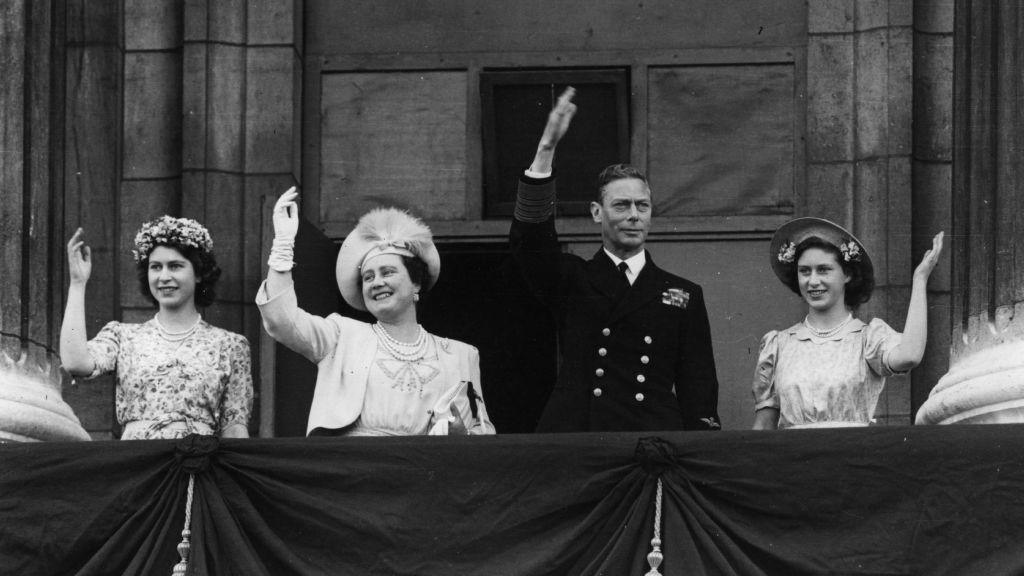
The Royal Family including King George VI and on the left, the future Queen, Princess Elizabeth, gathered on the balcony of Buckingham Palace to wave to those celebrating on VJ Day
Why is VJ Day important today?
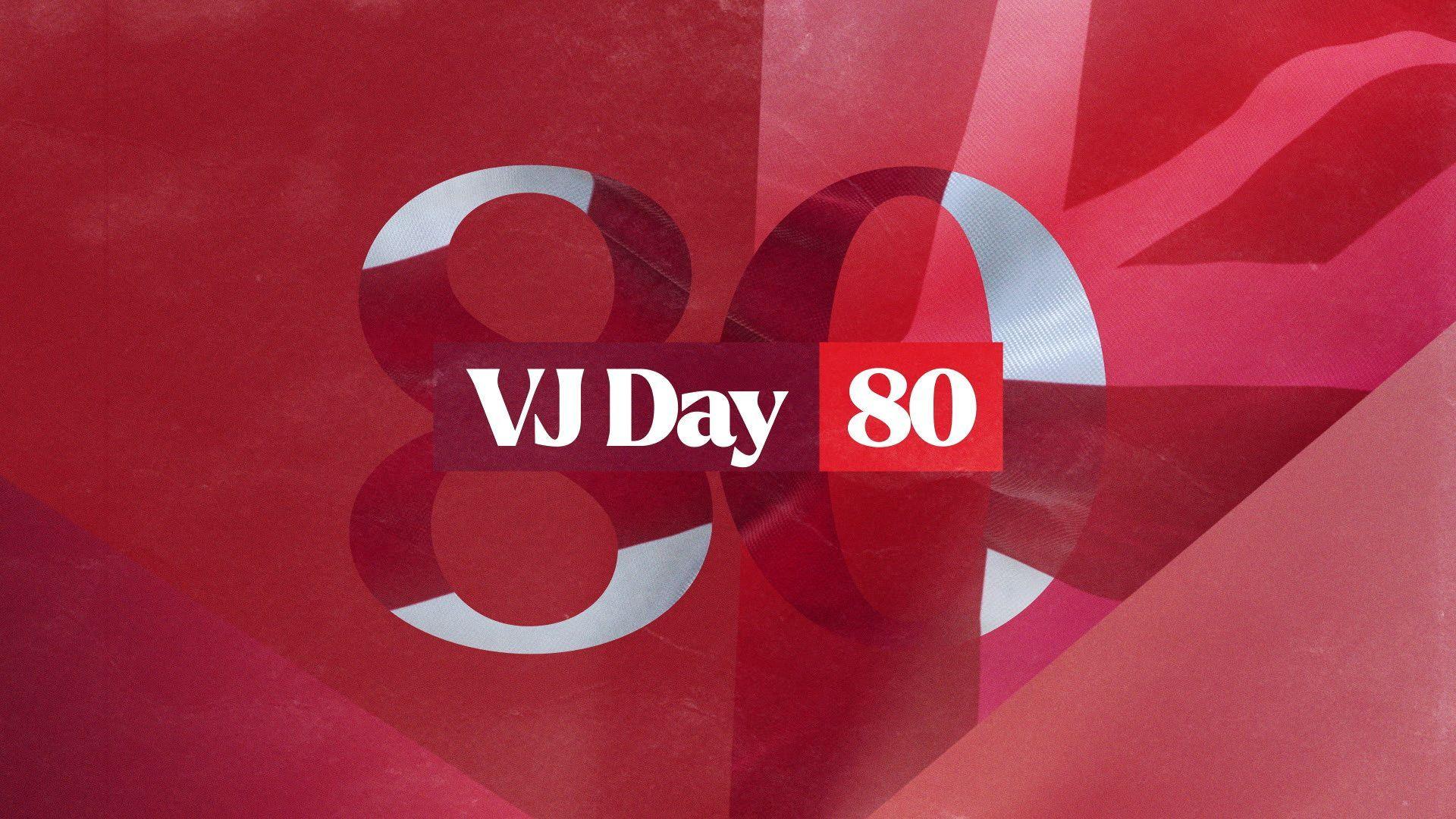
World War Two was the deadliest conflict in history, involving over 60 countries and causing the deaths of around 70 million people.
VJ Day was not just about celebration - it was also about remembering.
Remembering those who fought, those who suffered, and those who never returned home.
Reflecting on the impact of the Second World War, King George VI said in a broadcast: "There is not one of us who has experienced this terrible war who does not realise that we shall feel its inevitable consequences long after we have all forgotten our rejoicings today."
It marked the start of a new chapter for the world.
